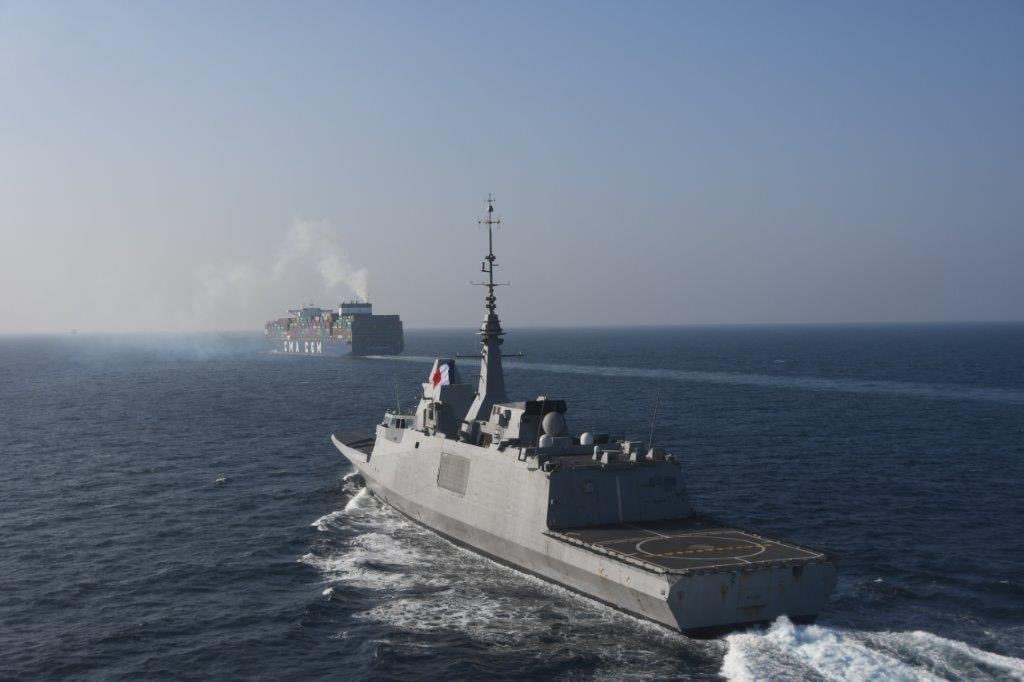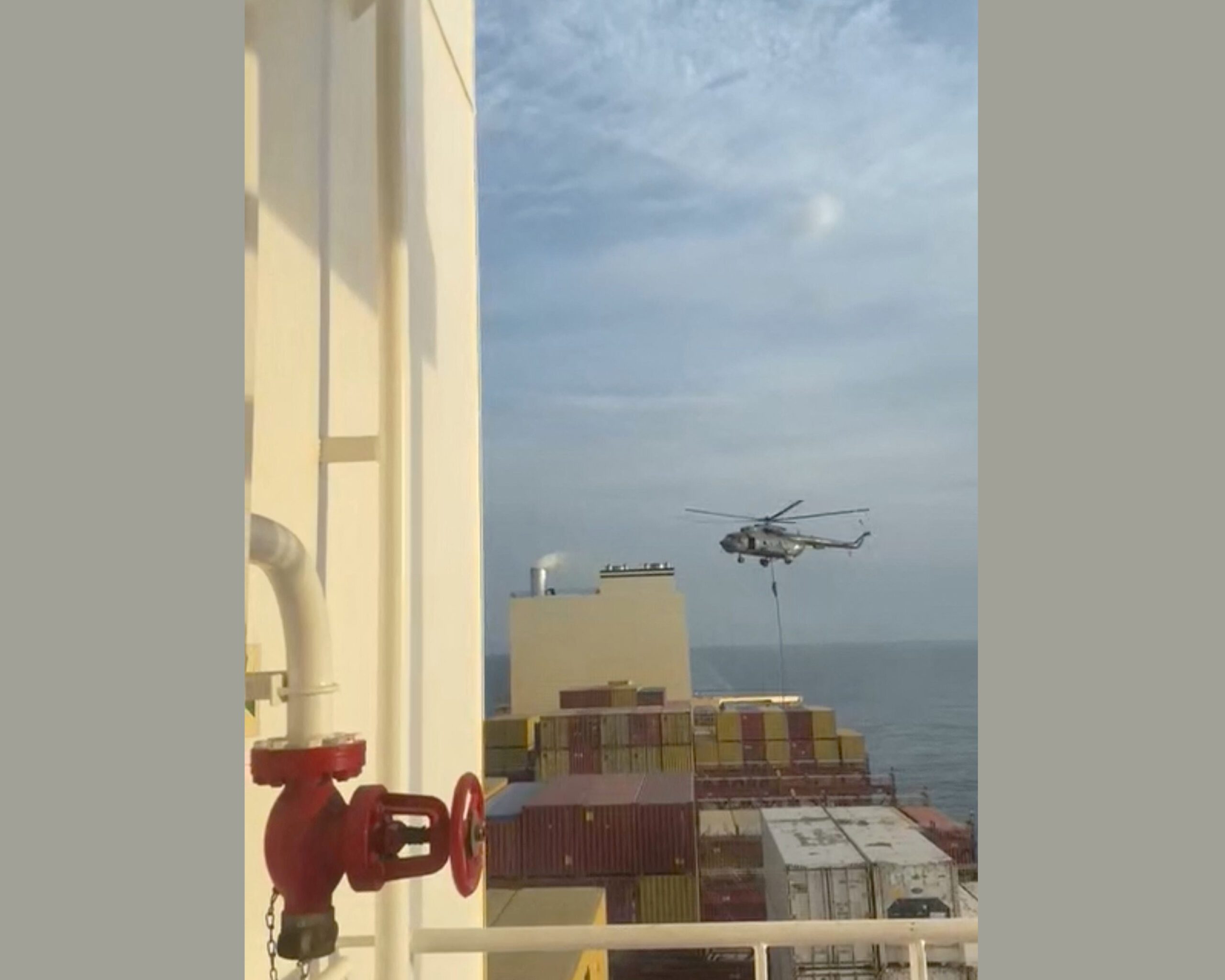A MQ-8B Fire Scout UAV hovers over the flight deck of a US frigate in the Atlantic Ocean. (U.S. Navy Photo)
(Reuters) – The Navy plans to carry out the first catapult takeoff of its new X-47B unmanned plane from an aircraft carrier next month and other shipboard tests despite mandatory budget cuts this year, according to the admiral who runs the programs.
Rear Admiral Mathias Winter, program executive officer for unmanned aviation and strike weapons, said Northrop Grumman Corp’s X-47B program and other unmanned aircraft programs should survive the fiscal 2013 budget cuts largely intact because they are still early in development.
But the Navy may buy fewer unmanned planes and helicopters in coming years unless Congress reverses budget cuts required over the next decade, Winter said in a recent interview at Naval Air Station Patuxent River in southern Maryland.
The Pentagon is already implementing $487 billion in cuts from planned spending levels over the next decade, but under a 2010 law, must cut spending by an additional $500 billion.
Top Navy leaders have identified unmanned systems, including aircraft, ground vehicles and undersea vehicles, as their No. 1 priority, and several unmanned US Navy airplanes are nearing key milestones next month. Those include the first catapult takeoff from a Navy aircraft carrier, the first landing on a carrier and the first flight of a new high-altitude spy plane.
Executives at Northrop, Boeing Co and other weapons makers are waiting anxiously to see how their programs fare in President Barack Obama’s fiscal 2014 budget proposal as well as the planning for fiscal 2015 that is just getting started now.
Winter said military commanders continued to demand unmanned planes for use on Navy ships since they can stay airborne longer, are able to fly at night and cost far less to operate.
“We’re not doing unmanned aviation just because there’s nothing else to do. There are true capability gaps that have been identified by our warfighter,” Winter said, noting that the Navy was heavily focused on making the new systems affordable.
“We will continue to see unmanned systems – not unbridled growth with multiple options, but deliberate, sustained support for operating these systems in our maritime environment,” he said, noting that unmanned planes would reduce the cost of protecting aircraft carriers, other ships and their crews.
TRITON’S FIRST FLIGHT SLATED FOR MAY
Winter said lower operating costs were a key selling point for continued work on unmanned systems, but industry investment and foreign military sales could also help in leaner times.
Winter is meeting with a senior Australian naval official this week to discuss the sale of the MQ-4C Triton, a high-altitude unmanned spy plane that is also built by Northrop. He said other countries have also expressed interest in smaller unmanned planes built by Boeing for use in maritime environments.
Triton, which is similar to the Global Hawk plane Northrop builds for the Air Force, is scheduled to have its first flight in May, with officials aiming to declare the system ready for combat in 2017. The demonstrator aircraft built for that program logged its 10,000th flight hour last week, with 96 percent of those hours in operational use, Winter said.
He said the Navy was focused on a few key programs: the X-47B, which will be followed by a competition for an unmanned carrier-based plane in 2014; the MQ-4C Triton; the Fire Scout unmanned helicopter, and RQ-21A, a smaller unmanned surveillance plane being developed by Boeing for the Marine Corps.
Across-the-board budget cuts that went into effect on March 1 will reduce funding for all U.S. Navy programs by an estimated 7 percent to 9 percent in fiscal 2013, including unmanned aircraft.
But Winter said he had enough in his budget to do shipboard tests with the X-47B on the USS George H.W. Bush in Norfolk, Virginia, in May – including the first-ever catapult launch – and possibly a landing using the plane’s tailhook. Other work on the program, however, might have to be delayed.
The Navy plans to ferry the X-47B to Norfolk on a barge in mid-May, where it will be hoisted on board for some taxiing maneuvers and a catapult shot off the ship, according to Winter.
That test will be followed by several days of “touch and go” landings without the plane’s tailhook. On the fourth or fifth day, if conditions are right, he said it would land on the carrier using its integrated tailhook.
NAVY LAUDS INVESTMENT IN NEW TECHNOLOGIES
Winter said it was important to complete development of the unmanned systems and ensure that they could be produced, but the Navy could always increase order quantities if a crisis emerged.
The four companies already doing preliminary work on an unmanned carrier-launched airborne surveillance and strike system, or UCLASS, had invested hundreds of millions of dollars of their own money to ensure that program – one of few new aircraft development programs – survived leaner government budgets, he said.
Work on the X-47B demonstrator plane would help reduce risk and lower costs on the successor UCLASS program, he added.
Meanwhile, Winter said the Navy is working on its acquisition plan and hopes to issue a request for proposals (RFP) in the first quarter of fiscal 2014, which begins on October 1, followed by a contract award in the fourth quarter.
“It’s an exciting time,” he said. “These are things that have never been done before.”
This article was written by By Andrea Shalal-Esa, (c) 2013 Thomson Reuters
Unlock Exclusive Insights Today!
Join the gCaptain Club for curated content, insider opinions, and vibrant community discussions.

 Join The Club
Join The Club













